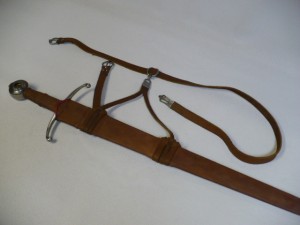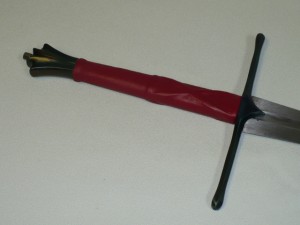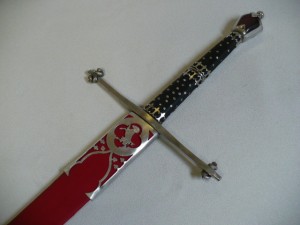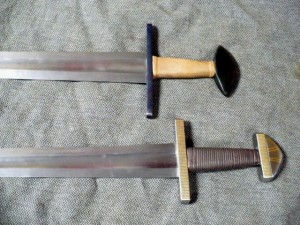
I make swords. I have made a lot of swords. I mean a LOT of swords. I have made them by the most modern means and by some fairly historically accurate methods. I love swords.

The sword is the physical representation of the military man. Even today our officers can carry swords as a sign of their rank.
A sword comsists of 4 parts: the blade, the pommel, the grip, and the guard
The most important part of a sword is the blade. Blades are of many types depending on the use of the sword. Primarily cutting swords have wide thin blades, while primarily thrusting swords have narrow pointed blades. But, as you might expect, most swords combine these functions to one degree or another. The blades geometry dictates the balance as well as the use. Thickness and width taper from the tang to the tip can make a blade handle easily in the hand. Cutters need more weight towards the tip, but as most swords are used to defend as well as to attack, good handling is a must.
The pommel serves multiple functions for a sword. It acts as a counterbalance to the weight of the blade. It keeps your hand from slipping off the grip. It can serve as an additional striking portion of the sword, in fact the word pummel means to strike and it comes from hitting someone with the pommel end of the sword. Some pommels are large, some small or even no more than a nut. They can be hollow, pierced, decorated, or plain. They can even be built into the grip as many early iron age swords or eastern styles.

If you are interested in swords, please feel free to go to Darkwood Armory and lookm over the many rapiers and other swords that we make for western martial arts, theater and of course the SCA.

